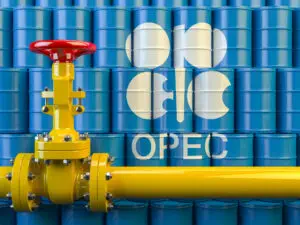By Kenneth Mohammed
 As Winston Churchill reportedly said in the 1940s as he was working to co-form what would become the United Nations: “Never let a good crisis go to waste.” It is advice the giant oil and energy corporations and Opec, enabled by politicians, have taken to heart. This is reflected in the price of petrol and our ballooning heating bills.
As Winston Churchill reportedly said in the 1940s as he was working to co-form what would become the United Nations: “Never let a good crisis go to waste.” It is advice the giant oil and energy corporations and Opec, enabled by politicians, have taken to heart. This is reflected in the price of petrol and our ballooning heating bills.
A new study calculated that the oil and gas industry has made more than $2.8bn (£2.4bn) a day in profits over the past half-century. In the second quarter of 2022, Exxon posted a profit of $17.9bn, the highest any publicly listed oil company has ever reported. Chevron hauled in $11.6bn, while Shell reported $11.47bn and BP $9.3 bn, its biggest windfall in more than 14 years.
National oil companies such as Saudi Aramco saw year-on-year profits rise 90% during the second quarter. The Saudi kingdom raked in a cool $88bn during the first half of 2022. Norwegian’s Equinor paid $3bn in dividends last month, while France’s Total tripled its income. Glencore, the world’s largest coal shipper, made record profits and will pay shareholders an additional $4.5bn.
While shareholders and executives reap the benefits of this crisis, families struggle with exorbitant fuel and energy bills on top of climbing food prices. The UN reports that 50 million people in 45 countries are facing famine.
The UN secretary general, António Guterres, condemned the fossil fuel super-profits as “grotesque greed” and urged governments to tax firms’ huge windfalls, while reiterating that it was immoral for corporations to be making record profits at a massive cost to the poorest communities and the climate.
“The combined profits of the largest energy companies in the first quarter of this year runs close to $100bn,” he said. “I urge all governments to tax this excessive profit and use the funds to support the most vulnerable people through these difficult times.”
This “energy crisis” has less to do with economic forces and more with greed. Petrol prices are lowest in Venezuela ($0.022 a litre), while a few miles away, Trinidad and Tobago pays $0.994. In Saudi Arabia, it’s $0.62, Russia $0.837, the US $1.083, China $1.285, the UK $2.003 and Norway $2.218. The price at the pump is made up of the costs of crude oil, refining, shipping and distribution, marketing, wholesale and retail margins, and, of course, taxes. The main driver is the crude price, which fluctuates at 50% to 60% of the total. Hence, an increase in crude raises petrol prices.
Another driver is inflation. Quantitative easing, or “printing money”, through the pandemic equated to £895bn pumped into the UK economy alone. This has contributed to Britain’s inflation rate, which is 10.1% and heading towards 15% – not vice versa, as some may have us believe. Stagflation is now a real possibility worldwide. All of this against the backdrop of many countries’ astonishing debts.
Leave a Reply